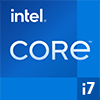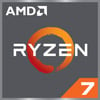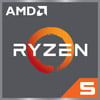
Intel Core i7-10750H vs AMD Ryzen 7 4800H
Last updated:
CPU comparison with benchmarks
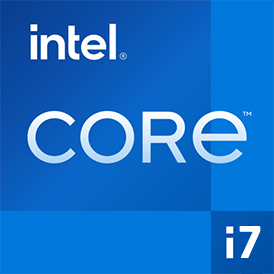
|
 |
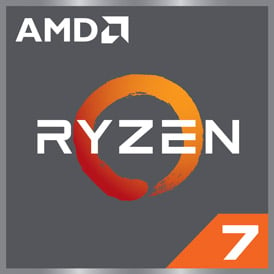
|
| Intel Core i7-10750H | AMD Ryzen 7 4800H | |
CPU comparisonIntel Core i7-10750H or AMD Ryzen 7 4800H - which processor is faster? In this comparison we look at the differences and analyze which of these two CPUs is better. We compare the technical data and benchmark results.
The Intel Core i7-10750H has 6 cores with 12 threads and clocks with a maximum frequency of 5.00 GHz. Up to 128 GB of memory is supported in 2 memory channels. The Intel Core i7-10750H was released in Q2/2020. The AMD Ryzen 7 4800H has 8 cores with 16 threads and clocks with a maximum frequency of 4.20 GHz. The CPU supports up to 64 GB of memory in 2 memory channels. The AMD Ryzen 7 4800H was released in Q1/2020. |
||
| Intel Core i7 (298) | Family | AMD Ryzen 7 (67) |
| Intel Core i 10000H (11) | CPU group | AMD Ryzen 4000H (6) |
| 10 | Generation | 3 |
| Comet Lake H | Architecture | Renoir (Zen 2) |
| Mobile | Segment | Mobile |
| Intel Core i7-9750H | Predecessor | -- |
| -- | Successor | -- |
|
|
||
CPU Cores and Base FrequencyThe Intel Core i7-10750H is a 6 core processor with a clock frequency of 2.60 GHz (5.00 GHz). The AMD Ryzen 7 4800H has 8 CPU cores with a clock frequency of 2.90 GHz (4.20 GHz). |
||
| Intel Core i7-10750H | Characteristic | AMD Ryzen 7 4800H |
| 6 | Cores | 8 |
| 12 | Threads | 16 |
| normal | Core architecture | normal |
| Yes | Hyperthreading | Yes |
| No | Overclocking ? | No |
| 2.60 GHz | Frequency | 2.90 GHz |
| 5.00 GHz | Turbo Frequency (1 Core) | 4.20 GHz |
| 3.20 GHz | Turbo Frequency (All Cores) | 3.80 GHz |
Internal GraphicsThe integrated graphics unit of a processor is not only responsible for the pure image output on the system, but can also significantly increase the efficiency of the system with the support of modern video codecs. |
||
| Intel UHD Graphics 630 | GPU | AMD Radeon RX Vega 7 (Renoir) |
| 0.35 GHz | GPU frequency | 0.40 GHz |
| 1.15 GHz | GPU (Turbo) | 1.60 GHz |
| 9.5 | GPU Generation | 9 |
| 14 nm | Technology | 7 nm |
| 3 | Max. displays | 3 |
| 24 | Compute units | 7 |
| 192 | Shader | 448 |
| No | Hardware Raytracing | No |
| No | Frame Generation | No |
| 64 GB | Max. GPU Memory | 2 GB |
| 12 | DirectX Version | 12 |
Hardware codec supportA photo or video codec that is accelerated in hardware can greatly accelerate the working speed of a processor and extend the battery life of notebooks or smartphones when playing videos. |
||
| Intel UHD Graphics 630 | GPU | AMD Radeon RX Vega 7 (Renoir) |
| Decode / Encode | Codec h265 / HEVC (8 bit) | Decode / Encode |
| Decode / Encode | Codec h265 / HEVC (10 bit) | Decode / Encode |
| Decode / Encode | Codec h264 | Decode / Encode |
| Decode / Encode | Codec VP9 | Decode / Encode |
| Decode / Encode | Codec VP8 | Decode / Encode |
| No | Codec AV1 | No |
| Decode / Encode | Codec AVC | Decode / Encode |
| Decode | Codec VC-1 | Decode |
| Decode / Encode | Codec JPEG | Decode / Encode |
Memory & PCIeThe Intel Core i7-10750H supports a maximum of 128 GB of memory in 2 memory channels. The AMD Ryzen 7 4800H can connect up to 64 GB of memory in 2 memory channels. |
||
| Intel Core i7-10750H | Characteristic | AMD Ryzen 7 4800H |
| DDR4-2933 | Memory | LPDDR4-4266, DDR4-3200 |
| 128 GB | Max. Memory | 64 GB |
| 2 (Dual Channel) | Memory channels | 2 (Dual Channel) |
| 46.9 GB/s | Max. Bandwidth | 51.2 GB/s |
| No | ECC | Yes |
| -- | L2 Cache | -- |
| 12.00 MB | L3 Cache | 8.00 MB |
| 3.0 | PCIe version | 3.0 |
| 16 | PCIe lanes | 12 |
| 15.8 GB/s | PCIe Bandwidth | 11.8 GB/s |
Thermal ManagementThe TDP (Thermal Design Power) of a processor specifies the required cooling solution. The Intel Core i7-10750H has a TDP of 45 W, that of the AMD Ryzen 7 4800H is 45 W. |
||
| Intel Core i7-10750H | Characteristic | AMD Ryzen 7 4800H |
| 45 W | TDP (PL1 / PBP) | 45 W |
| -- | TDP (PL2) | -- |
| -- | TDP up | 54 W |
| 35 W | TDP down | 35 W |
| 100 °C | Tjunction max. | 105 °C |
Technical detailsThe Intel Core i7-10750H has a 12.00 MB cache, while the AMD Ryzen 7 4800H cache has a total of 8.00 MB. |
||
| Intel Core i7-10750H | Characteristic | AMD Ryzen 7 4800H |
| 14 nm | Technology | 7 nm |
| Monolithic | Chip design | Chiplet |
| x86-64 (64 bit) | Instruction set (ISA) | x86-64 (64 bit) |
| SSE4.1, SSE4.2, AVX2 | ISA extensions | SSE4a, SSE4.1, SSE4.2, AVX2, FMA3 |
| BGA 1440 | Socket | FP6 |
| VT-x, VT-x EPT, VT-d | Virtualization | AMD-V, SVM |
| Yes | AES-NI | Yes |
| Windows 10, Windows 11, Linux | Operating systems | Windows 10, Windows 11, Linux |
| Q2/2020 | Release date | Q1/2020 |
| 395 $ | Release price | -- |
| show more data | show more data | |
Rate these processors
Average performance in benchmarks
⌀ Single core performance in 6 CPU benchmarks
⌀ Multi core performance in 8 CPU benchmarks
Cinebench R23 (Single-Core)
Cinebench R23 is the successor of Cinebench R20 and is also based on the Cinema 4 Suite. Cinema 4 is a worldwide used software to create 3D forms. The single-core test only uses one CPU core, the amount of cores or hyperthreading ability doesn't count.
|
|
Intel Core i7-10750H
6C 12T @ 5.00 GHz |
||
|
|
AMD Ryzen 7 4800H
8C 16T @ 4.20 GHz |
||
Cinebench R23 (Multi-Core)
Cinebench R23 is the successor of Cinebench R20 and is also based on the Cinema 4 Suite. Cinema 4 is a worldwide used software to create 3D forms. The multi-core test involves all CPU cores and taks a big advantage of hyperthreading.
|
|
Intel Core i7-10750H
6C 12T @ 3.20 GHz |
||
|
|
AMD Ryzen 7 4800H
8C 16T @ 3.80 GHz |
||
Geekbench 5, 64bit (Single-Core)
Geekbench 5 is a cross plattform benchmark that heavily uses the systems memory. A fast memory will push the result a lot. The single-core test only uses one CPU core, the amount of cores or hyperthreading ability doesn't count.
|
|
Intel Core i7-10750H
6C 12T @ 5.00 GHz |
||
|
|
AMD Ryzen 7 4800H
8C 16T @ 4.20 GHz |
||
Geekbench 5, 64bit (Multi-Core)
Geekbench 5 is a cross plattform benchmark that heavily uses the systems memory. A fast memory will push the result a lot. The multi-core test involves all CPU cores and taks a big advantage of hyperthreading.
|
|
Intel Core i7-10750H
6C 12T @ 3.20 GHz |
||
|
|
AMD Ryzen 7 4800H
8C 16T @ 3.80 GHz |
||
Geekbench 6 (Single-Core)
Geekbench 6 is a benchmark for modern computers, notebooks and smartphones. What is new is an optimized utilization of newer CPU architectures, e.g. based on the big.LITTLE concept and combining CPU cores of different sizes. The single-core benchmark only evaluates the performance of the fastest CPU core, the number of CPU cores in a processor is irrelevant here.
|
|
Intel Core i7-10750H
6C 12T @ 5.00 GHz |
||
|
|
AMD Ryzen 7 4800H
8C 16T @ 4.20 GHz |
||
Geekbench 6 (Multi-Core)
Geekbench 6 is a benchmark for modern computers, notebooks and smartphones. What is new is an optimized utilization of newer CPU architectures, e.g. based on the big.LITTLE concept and combining CPU cores of different sizes. The multi-core benchmark evaluates the performance of all of the processor's CPU cores. Virtual thread improvements such as AMD SMT or Intel's Hyper-Threading have a positive impact on the benchmark result.
|
|
Intel Core i7-10750H
6C 12T @ 3.20 GHz |
||
|
|
AMD Ryzen 7 4800H
8C 16T @ 3.80 GHz |
||
Cinebench R20 (Single-Core)
Cinebench R20 is the successor of Cinebench R15 and is also based on the Cinema 4 Suite. Cinema 4 is a worldwide used software to create 3D forms. The single-core test only uses one CPU core, the amount of cores or hyperthreading ability doesn't count.
|
|
Intel Core i7-10750H
6C 12T @ 5.00 GHz |
||
|
|
AMD Ryzen 7 4800H
8C 16T @ 4.20 GHz |
||
Cinebench R20 (Multi-Core)
Cinebench R20 is the successor of Cinebench R15 and is also based on the Cinema 4 Suite. Cinema 4 is a worldwide used software to create 3D forms. The multi-core test involves all CPU cores and taks a big advantage of hyperthreading.
|
|
Intel Core i7-10750H
6C 12T @ 3.20 GHz |
||
|
|
AMD Ryzen 7 4800H
8C 16T @ 3.80 GHz |
||
iGPU - FP32 Performance (Single-precision GFLOPS)
The theoretical computing performance of the internal graphics unit of the processor with simple accuracy (32 bit) in GFLOPS. GFLOPS indicates how many billion floating point operations the iGPU can perform per second.
|
|
Intel Core i7-10750H
Intel UHD Graphics 630 @ 1.15 GHz |
||
|
|
AMD Ryzen 7 4800H
AMD Radeon RX Vega 7 (Renoir) @ 1.60 GHz |
||
Blender 3.1 Benchmark
In the Blender Benchmark 3.1, the scenes "monster", "junkshop" and "classroom" are rendered and the time required by the system is measured. In our benchmark we test the CPU and not the graphics card. Blender 3.1 was presented as a standalone version in March 2022.
|
|
Intel Core i7-10750H
6C 12T @ 3.20 GHz |
||
|
|
AMD Ryzen 7 4800H
8C 16T @ 3.80 GHz |
||
Estimated results for PassMark CPU Mark
Some of the CPUs listed below have been benchmarked by CPU-monkey. However the majority of CPUs have not been tested and the results have been estimated by a CPU-monkey’s secret proprietary formula. As such they do not accurately reflect the actual Passmark CPU mark values and are not endorsed by PassMark Software Pty Ltd.
|
|
Intel Core i7-10750H
6C 12T @ 3.20 GHz |
||
|
|
AMD Ryzen 7 4800H
8C 16T @ 3.80 GHz |
||
CPU-Z Benchmark 17 (Single-Core)
The CPU-Z benchmark measures a processor's performance by measuring the time it takes the system to complete all benchmark calculations. The faster the benchmark is completed, the higher the score.
|
|
Intel Core i7-10750H
6C 12T @ 3.20 GHz |
||
|
|
AMD Ryzen 7 4800H
8C 16T @ 3.80 GHz |
||
CPU-Z Benchmark 17 (Multi-Core)
The CPU-Z benchmark measures a processor's performance by measuring the time it takes the system to complete all benchmark calculations. The faster the benchmark is completed, the higher the score.
|
|
Intel Core i7-10750H
6C 12T @ 2.60 GHz |
||
|
|
AMD Ryzen 7 4800H
8C 16T @ 2.90 GHz |
||
Cinebench R15 (Single-Core)
Cinebench R15 is the successor of Cinebench 11.5 and is also based on the Cinema 4 Suite. Cinema 4 is a worldwide used software to create 3D forms. The single-core test only uses one CPU core, the amount of cores or hyperthreading ability doesn't count.
|
|
Intel Core i7-10750H
6C 12T @ 5.00 GHz |
||
|
|
AMD Ryzen 7 4800H
8C 16T @ 4.20 GHz |
||
Cinebench R15 (Multi-Core)
Cinebench R15 is the successor of Cinebench 11.5 and is also based on the Cinema 4 Suite. Cinema 4 is a worldwide used software to create 3D forms. The multi-core test involves all CPU cores and taks a big advantage of hyperthreading.
|
|
Intel Core i7-10750H
6C 12T @ 3.20 GHz |
||
|
|
AMD Ryzen 7 4800H
8C 16T @ 3.80 GHz |
||
Cinebench 2024 (Single-Core)
The Cinebench 2024 benchmark is based on the Redshift rendering engine, which is also used in Maxon's 3D program Cinema 4D. The benchmark runs are each 10 minutes long to test whether the processor is limited by its heat generation.
|
|
Intel Core i7-10750H
6C 12T @ 5.00 GHz |
||
|
|
AMD Ryzen 7 4800H
8C 16T @ 4.20 GHz |
||
Cinebench 2024 (Multi-Core)
The Multi-Core test of the Cinebench 2024 benchmark uses all cpu cores to render using the Redshift rendering engine, which is also used in Maxons Cinema 4D. The benchmark run is 10 minutes long to test whether the processor is limited by its heat generation.
|
|
Intel Core i7-10750H
6C 12T @ 5.00 GHz |
||
|
|
AMD Ryzen 7 4800H
8C 16T @ 4.20 GHz |
||
Devices using this processor |
|
| Intel Core i7-10750H | AMD Ryzen 7 4800H |
| Unknown | Asus ROG Zephyrus G14 GA401IU-HE017T ASUS TUF Gaming A15 FA506IV |
Comparison of the two processors
Both the Intel Core i7-10750H and the AMD Ryzen 7 4800H are mobile processors for the upper segment. While the Intel Core i7-10750H has 6 CPU cores and can process 12 threads simultaneously, the AMD Ryzen 7 4800H even has 8 cores and can process up to 16 threads simultaneously through SMT.The AMD Ryzen 7 4800H is based on the AMD Renoir design that combines Zen 2 CPU cores (Ryzen 3xxx) with a powerful AMD Radeon 7 Graphics (Renoir) iGPU. The iGPU clocks at up to 1.6 GHz and has 448 shaders. That is enough for 1433 GFLOPS and thus also for newer games in 720p and 1080p resolutions with low to medium details.
The older Intel UHD Graphics 630 of the Intel Core i7-10750H doesn't stand a chance against the AMD Radeon 7 Graphics (Renoir). The AMD solution is about 3x as fast.
Even with the CPU performance of the AMD Ryzen 7 4800H, the Intel Core i7-10750H has only few starting points for a victory. The Intel Core i7-10750H still does well in single-core scenarios and can even beat the AMD processor in most cases. This is mainly due to the high single-core clock of up to 5 GHz, while the AMD processor can clock at a maximum of 4.2 GHz. But as soon as several CPU cores are required, the AMD Ryzen 7 4800H with its 8 cores pulls away significantly and achieves an approx. 30% higher performance than the Intel mobile processor.
The Intel Core i7-10750H scores points with the support of up to 128 GB DDR4-2933 RAM, while the AMD Ryzen 7 4800H can connect a maximum of 32 GB DDR4-3200. Both processors have two memory channels. Since these are mobile processors, the 32 GB RAM limit of the AMD processor is not critical, because very few users currently use more than 32 GB of memory in a notebook.
Both processors are specified with 45 watt TDP, but the AMD processor is much more efficient than the Intel CPU, which is still manufactured in 14 nm, thanks to its more modern 7 nm production.
Popular comparisons containing this CPUs
back to index




